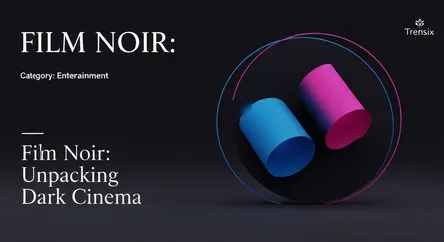Entertainment
Film Noir: Unpacking Dark Cinema

Explore Film Noir, the stylish Hollywood genre known for its cynical heroes, dark themes, and iconic visual style. Learn about its lasting impact.
What is it?
Film Noir, French for "black film," is a cinematic style primarily associated with American crime dramas from the early 1940s to the late 1950s. It's defined not by a simple genre formula but by its distinct mood and visual aesthetic. Key characteristics include low-key, black-and-white lighting with stark shadows (chiaroscuro), complex plots, and a pervasive sense of pessimism and moral ambiguity. The protagonists are often cynical anti-heroes, like private eyes or down-on-their-luck individuals, who become entangled with a mysterious and deadly "femme fatale." Classic examples include The Maltese Falcon and Double Indemnity.
Why is it trending?
The influence of Film Noir is timeless. While the classic era has passed, its themes and style are constantly being revived in "neo-noir" films like Blade Runner 2049, Sin City, and The Batman. Modern filmmakers are drawn to its sophisticated visual language and its capacity to explore complex, adult themes of alienation, greed, and corruption. The genre's morally gray characters resonate with contemporary audiences who appreciate stories that challenge simple notions of good and evil. Furthermore, streaming services have made the original classics more accessible than ever, introducing them to a new generation of cinephiles.
How does it affect people?
Film Noir fundamentally changed cinematic storytelling by introducing a new level of psychological depth and realism. It reflected the post-war anxiety and cynicism of its time, challenging the optimistic narratives previously dominant in Hollywood. For audiences, it provides a cathartic exploration of the darker side of human nature and society. The genre's enduring archetypes—the world-weary detective, the seductive femme fatale—have become ingrained in our cultural consciousness. It encourages viewers to question authority, morality, and the very nature of truth, making it a powerful and thought-provoking cinematic experience that continues to influence film today.